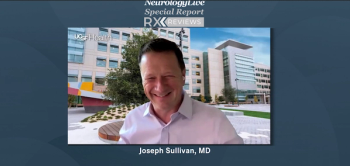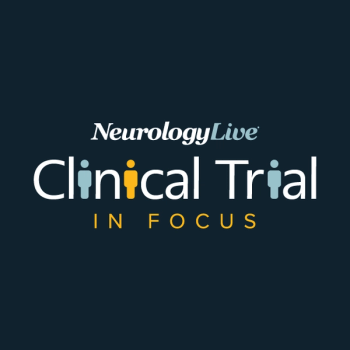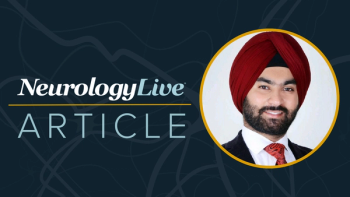
Integrative Health and Parkinson Disease
It has been estimated that between 40% and 60% of patients with PD use at least one form of complementary medicine. In this podcast, neurologist Sarah Mulukutla, MD, MPH talks about CAM options for neurologists to discuss with their patients.
Q&A
In this podcast, Heidi Moawad, MD interviews neurologist Sarah Mulukutla, MD, MPH, about complementary and alternative medicine (CAM) for treating symptoms of Parkinson disease (PD). Dr Muluktla is Chairperson,
Heidi Moawad, MD (HM): Do you think patients who are diagnosed with PD have a tendency to seek out complementary and alternative medical care? Why or why not?
Sarah Mulukutla, MD, MPH (SM): By the numbers, we know that 40% to 60% of people with PD use at least one form of complementary medicine. This is higher than the general American population (33% of American adults) and probably
By nature, PD symptoms fluctuate. One day may be a good day; the next day may be difficult. Stress is a well-known trigger for tremor or freezing, but there are other triggers that we are not aware off. Linking up with a complementary therapist, who is seen regularly, helps support a person with PD emotionally as well as physically, and oftentimes they can feel better immediately just by having the support. People with PD see CAM providers much more regularly than they see their movement disorder doctors.
HM: Why is it important for neurologists to discuss CAM for PD?
SM: People with PD are looking for tools. They are actively seeking information, sharing tips in support groups. We are seeing people get diagnosed with PD at age 30, 40, and 50 years. They are confronting symptoms every day while still trying to work and raise a family. It's natural for patients to seek therapies which may be helpful. I personally have had success with CAM, but it's because i integrate my understanding of the disease from the Neurological perspective.
There is so much that neurologists can contribute to the discussion. The utilization of CAM is high; it's a huge market, especially in larger cities, and it's only going to get more prevalent. As physicians we can serve our patients better by being knowledgeable about CAM.
HM: Are CAM therapies always out of pocket?
SM: Some insurance companies provide reimbursement for acupuncture of massage, but it is not universally covered.
And traditionally, costs are a barrier. We are now seeing academic centers get grants to cover services such as Acupuncture, Tai Chi, and yoga for people with PD. This is exciting, not only because services are more available, but the collaboration by academic centers overseeing the therapies and monitoring for effects.
HM: What types of questions about CAM do your patients who have PD tend to ask you?
SM: Most questions are practical-patients want to how it works. I'll get questions about what each session will look like, how many sessions are required, how long will it take to see an impact, how long will the benefits last, and what is the fee.
Many people ask questions about something they have read, or supplements they are taking. If I am not familiar with the therapy, I will look online and try to find studies explaining the mechanism, so that I can have an educated discussion with the patient.
HM: Have you been able to find any existing formal guidelines that you think are helpful for a neurologist navigating this challenge of caring for PD patients who want to use CAM?
SM: There are no formal guidelines for CAM as there is tremendous variability in the type of services and availability. For someone who is just getting started, I would search very broadly on PubMed (eg, “Complementary Therapies for Parkinson disease”). Several reviews have been published in the last few years and provide excellent summaries of what's been studied. Some authors to look for are Danny Bega, Indu Subramanian, and Monique Giroux.
At the upcoming
HM: What is the challenge with creating guidelines?
SM: CAM can't be studied using randomized controlled trials. There are simply too many variables that contribute. There is variability in the provider as well. For someone getting started, a tip is to learn about any local services that may be available. Reach out to the providers who claim to have success with treating PD. Ask to have a session or observe a class. And then also do the research-see what's been published, what the potential mechanisms for how the therapy may help, and then guide your patients on both the science and the practical aspect of venturing out there to try a new service.
HM: What have you observed in terms of helpful/harmful therapies?
SM: I have found CAM to be very helpful in promoting relaxation, and also relieving anxiety which exacerbates symptoms.
From the relaxation perspective, we know that people with PD have hyperactive networks in the brain. We see this on MRI. The tremor and rigidity are physical signs, and procedures such as deep brain stimulation downregulate this hyperactivity.
Activities such as deep breathing and meditation calm down the nervous system. This has been studied and is a valuable skill for people with PD. Many of my patients have learned to control their tremor with relaxation exercises.
In my clinic, we also use a sound-based therapy called Vibroacoustic Sound Therapy. This is a bed that transmits vibrations and relaxes the muscles and cells. Each session lasts 30 to 60 minutes of lying down on the bed. After the session, people realize how good they feel when they take time to rest. Over time, they learn to achieve relaxation states at home with biofeedback or lifestyle regulation.
Yoga and Tai Chi are excellent because they promote mind-body connection and also retrain the nervous system for better movement, on top of facilitating a relaxed neurophysiological state.
HM: Does the quality of the instructor matter?
SM: Yes. Both the quality of the instructor, and also the relationship that develops over time between the patient and the provider. A therapeutic relationship itself becomes a catalyst for improved mood, motivation, connection, and a reliable collaborator to talk through health issues. One of the aspects that I am fascinated by, how can we as doctors cultivate an intentionally healing relationship.
A last prerequisite for complementary therapies, in my view, is that the patient ultimately develops capacity to govern his or her own health. it is about providing new awareness to our patients and giving them tools to understand when and why their bodies are out of balance. It's not just medications that help them feel better, but their choices on a day to day basis that determines what kind of a day they are able to have.
HM: Do you have any patients who do not want to take or can't take medication for their PD? Have they had any reasonable alternatives?
SM: The use of CAM works alongside medications. I have had patients seek me out who prefer to avoid medication and it's a case by case basis. One of the nice things about CAM is how many options there are. From lifestyle coaching to acupuncture, massage, yoga or meditation-we can customize a unique plan for each person, accounting for their individualized preference. And typically, this plan includes medications in addition to other activities they enjoy and benefit from.
HM: Are there any exercises that you don't recommend for patients with PD to do on their own due to safety?
SM: It really depends on the situation. It is important to have proper instruction for any new physical exercise. Movement classes can be particularly tricky, because group classes can have variability and there is risk of injury. Safety should always be considered first and foremost for someone who hasn't exercised before;; consider 1:1 training before joining a group class.
HM: Do you think any particular exercises are more suited/easier for patients with PD to do on their own?
SM: The best exercise or activity is something that a person naturally is interested in. Since there are so many options, aligning with a person's preferences and interest has much more chance of success.
For those who are not sure, I focus on simple and clear instructions, and small achievable goals. For example, if stress is an issue, following a guided meditation or breathing practice every day for a week is a good place to start. For people who are sedentary, purchasing an activity tracker gives them new insights into how many steps they take each day, or how sleep quality improves when they are more active. Whenever a new exercise is started, I recommend that patients start a journal, so they can keep track of the impact.
Ultimately, CAM is about helping each individual regain ability to take control of their health- to whatever extent that they can. It's an encouraging and inspiring field, because we see people feel better, and they learn to achieve this themselves.
Newsletter
Keep your finger on the pulse of neurology—subscribe to NeurologyLive for expert interviews, new data, and breakthrough treatment updates.



































